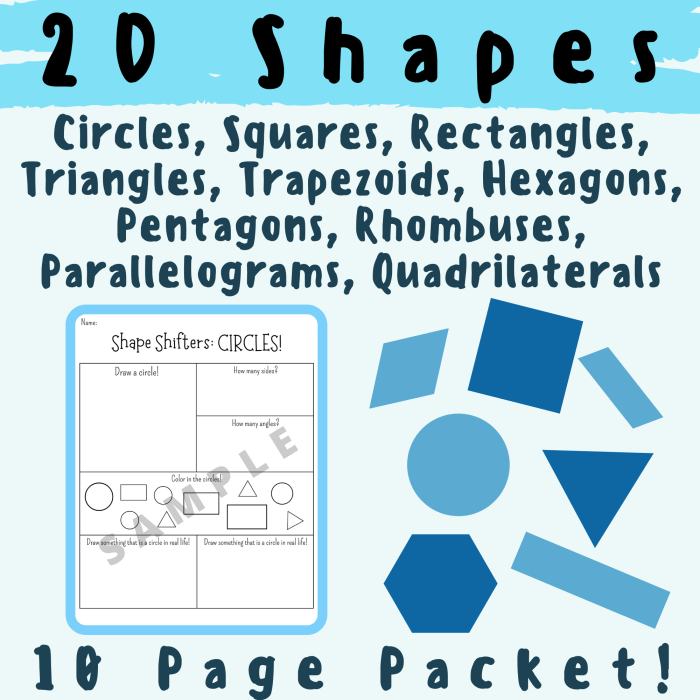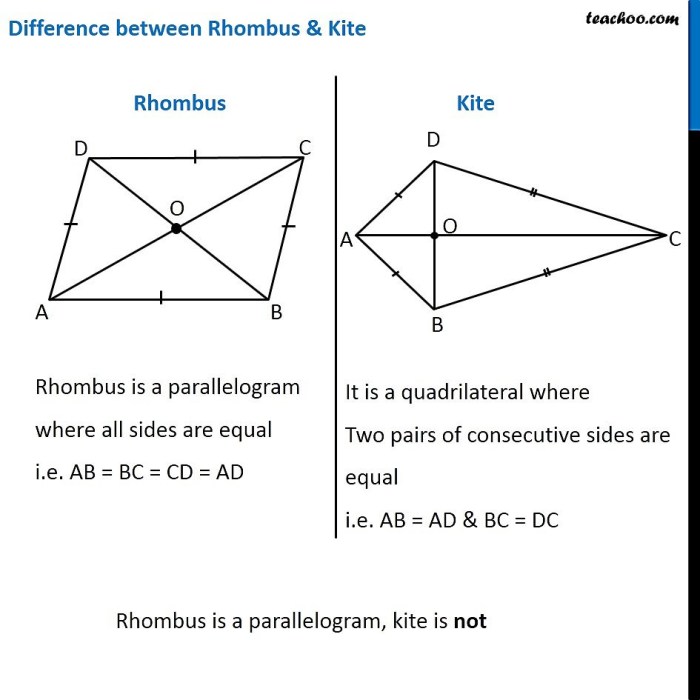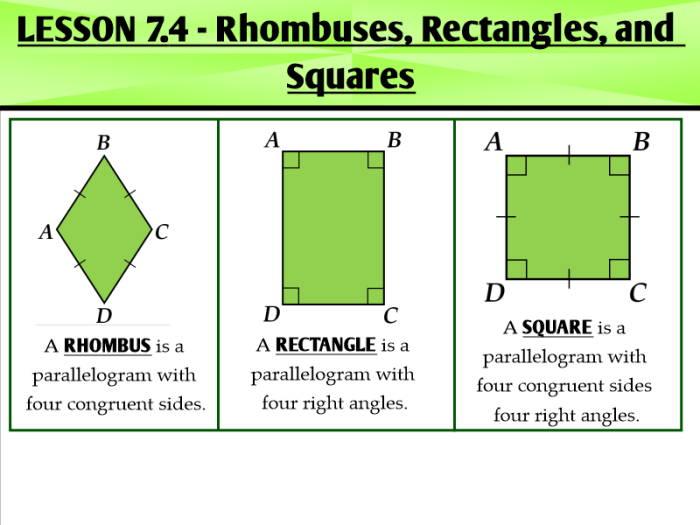Squares rectangles and rhombuses worksheet – Embark on a geometric journey with our comprehensive Squares, Rectangles, and Rhombuses Worksheet, meticulously designed to enhance your understanding of these fundamental shapes. Delve into their unique characteristics, explore their interrelationships, and apply your knowledge through engaging activities that foster a deeper appreciation for geometry.
From defining each shape’s distinct features to uncovering their practical applications in various fields, this worksheet serves as an invaluable resource for students, educators, and anyone seeking to expand their geometric horizons.
1. Introduction to Squares, Rectangles, and Rhombuses
Squares, rectangles, and rhombuses are fundamental geometric shapes with distinct characteristics. A square is a regular quadrilateral with four equal sides and four right angles. A rectangle is a quadrilateral with four right angles but has two pairs of equal sides.
A rhombus is a parallelogram with four equal sides but has no right angles.
These shapes are commonly found in our surroundings and play a significant role in various fields.
2. Properties of Squares, Rectangles, and Rhombuses

The key properties of squares, rectangles, and rhombuses are:
- Square:Four equal sides, four right angles, equal diagonals that bisect each other perpendicularly.
- Rectangle:Four right angles, opposite sides equal, diagonals are equal but do not bisect each other perpendicularly.
- Rhombus:Four equal sides, opposite angles equal, diagonals bisect each other perpendicularly.
3. Applications of Squares, Rectangles, and Rhombuses

These shapes have numerous applications in various fields:
- Architecture:Squares and rectangles are used in building floor plans, windows, and doors. Rhombuses can be found in decorative elements.
- Engineering:Rectangles are used in beams and bridges due to their structural strength. Squares are used in gears and machinery.
- Design:Squares, rectangles, and rhombuses are used in logos, artwork, and textiles for their aesthetic appeal.
4. Geometric Relationships between Squares, Rectangles, and Rhombuses

These shapes have hierarchical relationships:
- A square is both a rectangle and a rhombus.
- A rectangle is a parallelogram with four right angles.
- A rhombus is a parallelogram with four equal sides.
They can be transformed into one another through rotations, reflections, or translations.
Key Questions Answered: Squares Rectangles And Rhombuses Worksheet
What are the key differences between squares, rectangles, and rhombuses?
Squares possess four equal sides and four right angles, making them regular quadrilaterals. Rectangles have four right angles but their opposite sides are not necessarily equal in length. Rhombuses have four equal sides but their angles are not necessarily right angles.
How can I apply my understanding of squares, rectangles, and rhombuses in real-world situations?
Understanding these shapes is crucial in architecture, engineering, design, and various other fields. For instance, architects utilize rectangles to design floor plans, while engineers employ the properties of squares to ensure structural stability.
What types of activities are included in this worksheet to enhance my learning?
This worksheet offers a range of interactive activities, including shape identification exercises, drawing and measurement tasks, and problem-solving challenges. These activities are designed to reinforce your understanding and foster critical thinking skills.